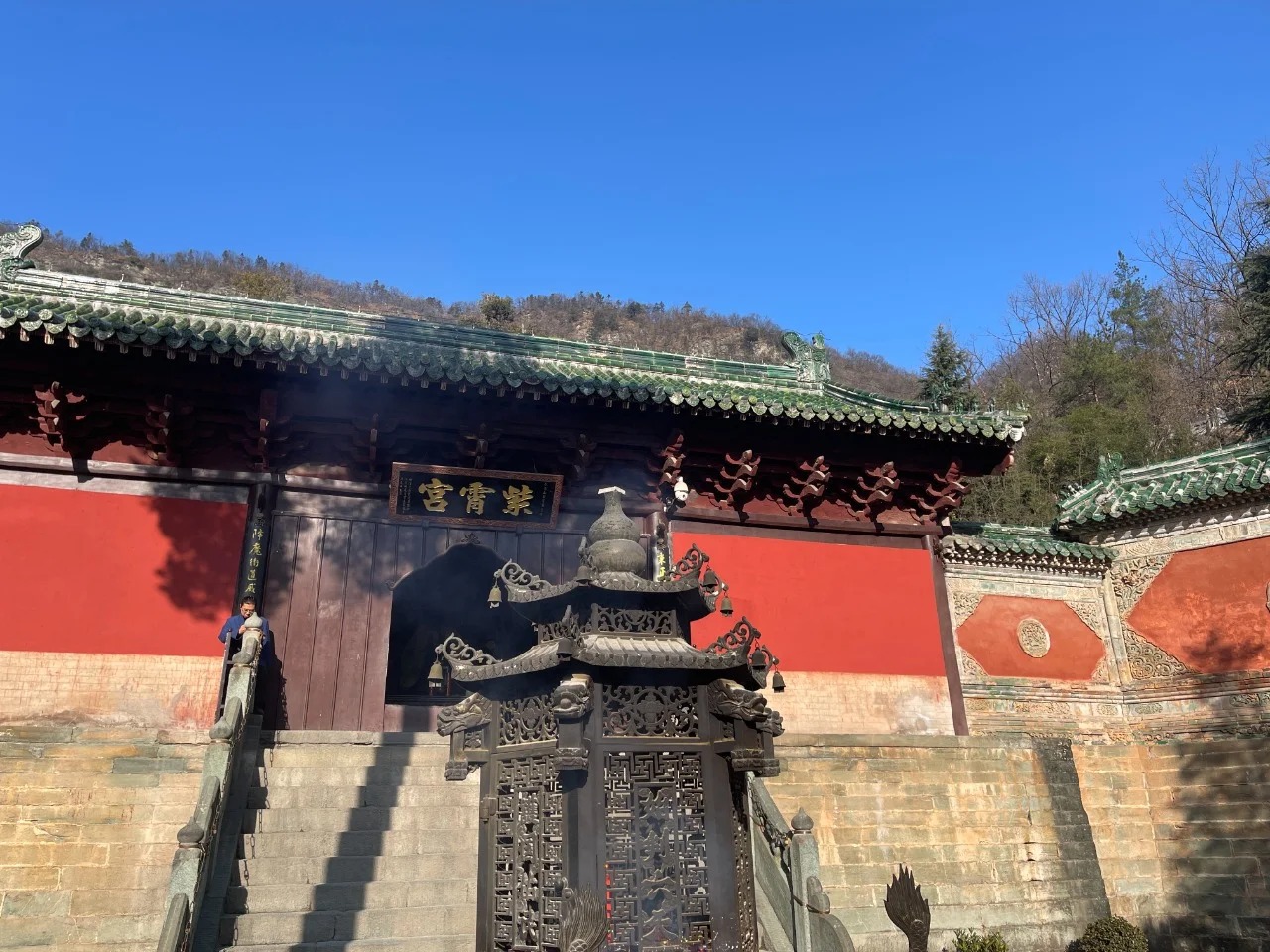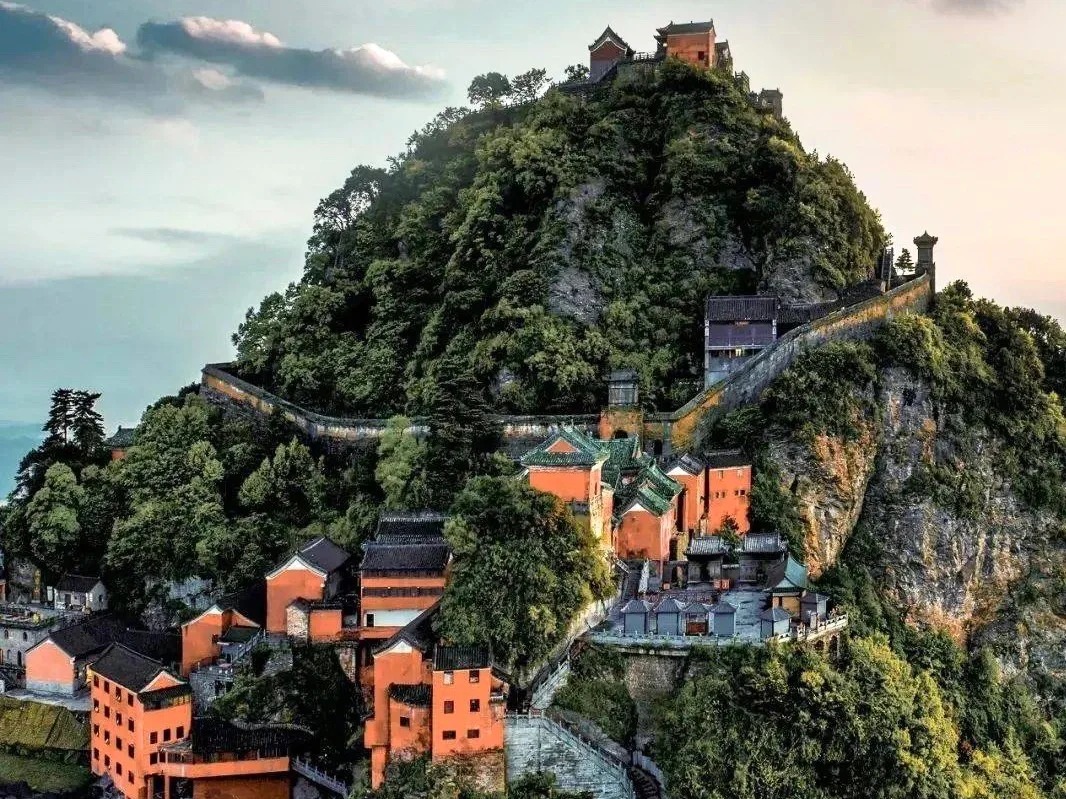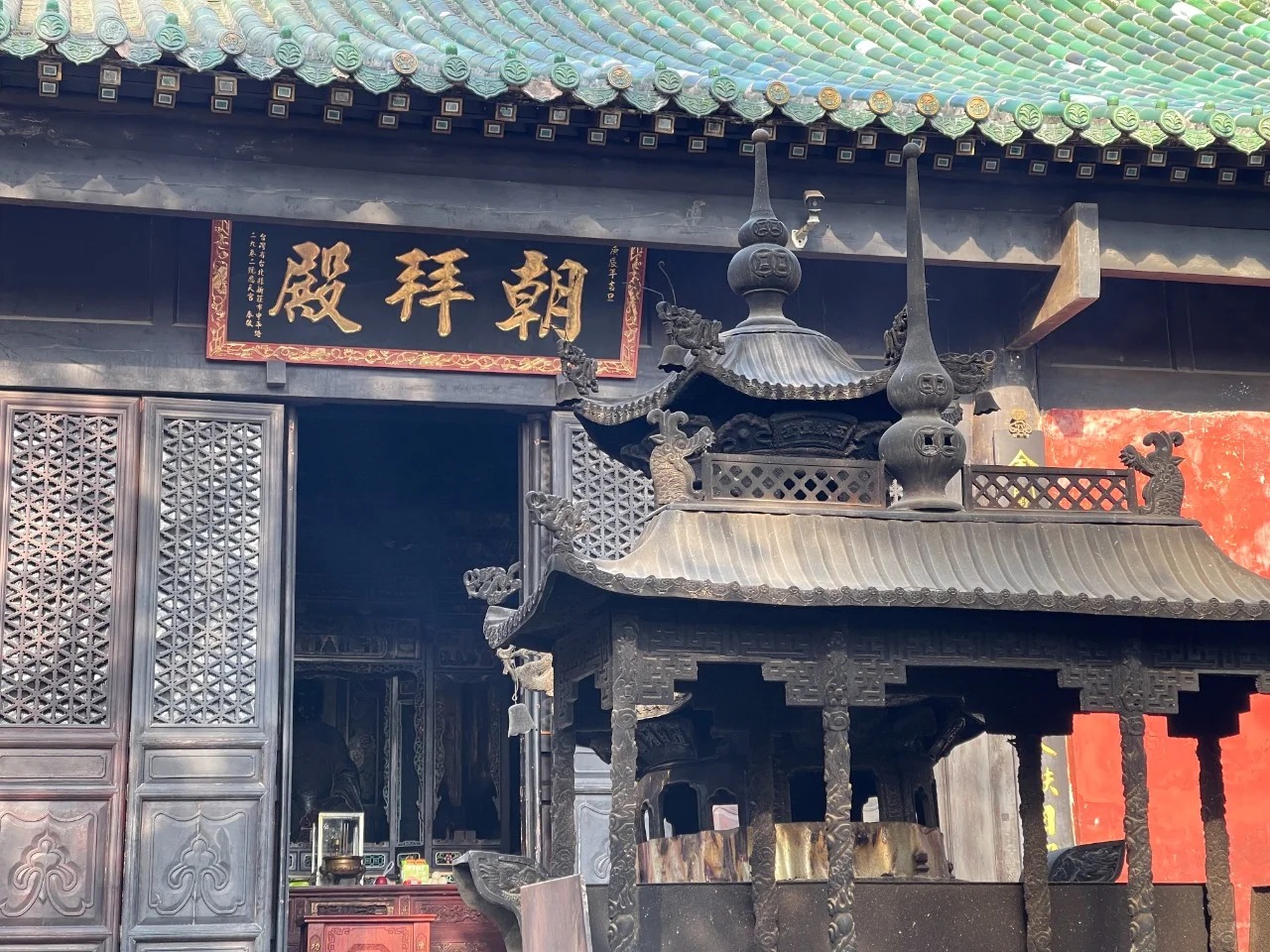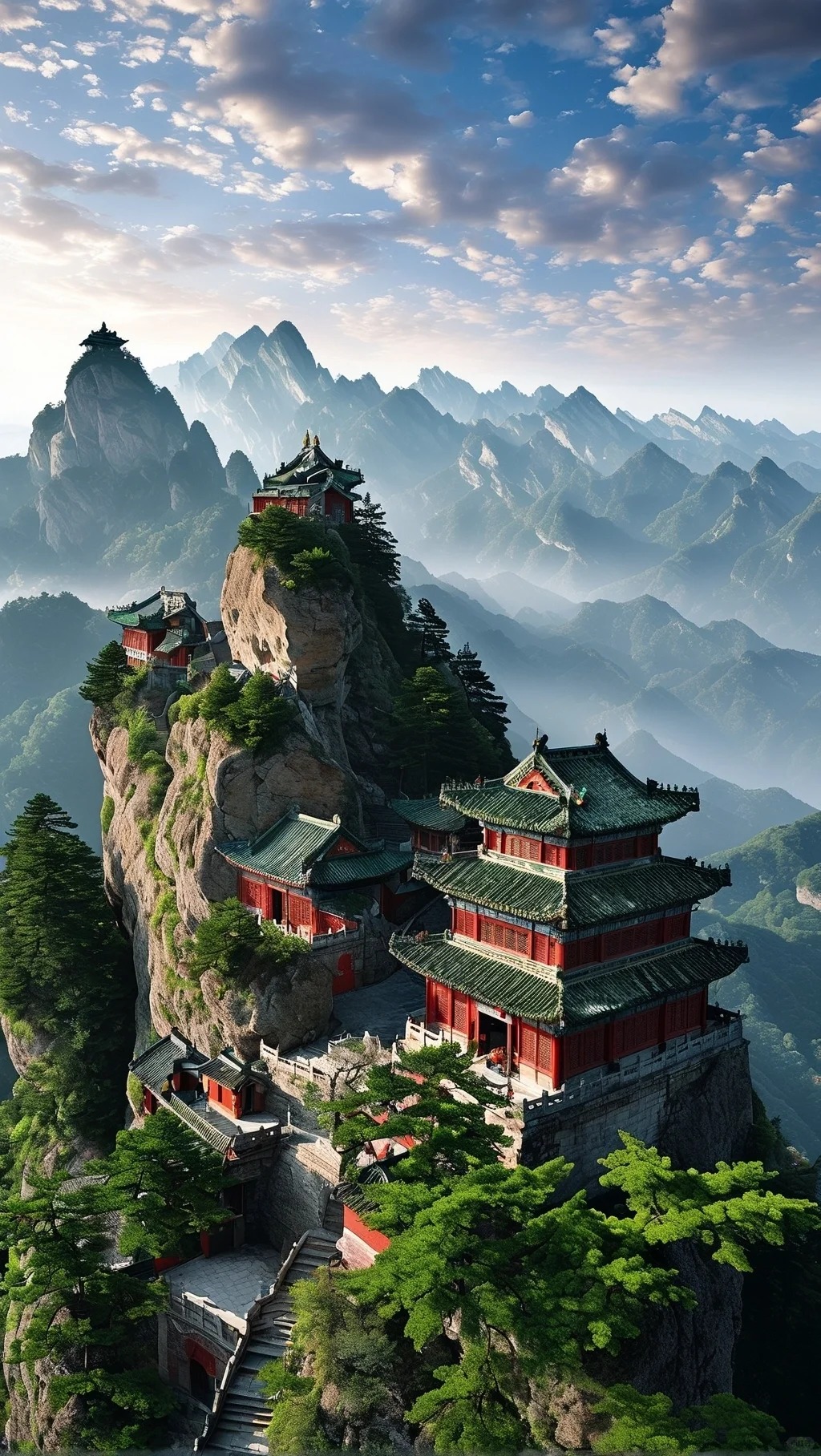Visiting Information
| Information | Details |
|---|---|
| Chinese Name | 武当山 (Wǔdāng Shān) |
| Location and Address | Wudang District, Shiyan City, Hubei Province, China |
| Opening Time/Hours | Open 24 hours (individual temples may have specific opening hours) |
| Entrance Fee | CNY 240 (March to November); CNY 220 (December to February); Additional fees may apply for specific attractions |
| How to Get There | By Bus: Take a bus from Shiyan City to Wudang Mountain Tourist Center By Taxi: Available from Shiyan City, but can be expensive (Note: No metro system available) |
| Best Time for Visit | April to October for mild weather and beautiful scenery; avoid Chinese national holidays for fewer crowds |
| Contact Info | +86 719 5666111 (Wudang Mountain Tourism Bureau) |
Overview
The Wudang Mountains, located in Hubei Province, China, are renowned for their deep connection to Taoism and Chinese martial arts. This mountain range is not only a place of stunning natural beauty but also a significant cultural and historical site. The Wudang Mountains are famous for their ancient Taoist temples and monasteries, as well as being the birthplace of Wudang martial arts, including Tai Chi.
Historical Background
The history of the Wudang Mountains as a sacred Taoist site dates back to the Eastern Han Dynasty (25-220 AD). However, it was during the Tang Dynasty (618-907) that the area gained prominence as a center for Taoist practice. The mountains reached their peak of importance during the Ming Dynasty (1368-1644), when Emperor Zhu Di ordered the construction of numerous temples and palaces. This period saw the creation of many of the architectural marvels that still stand today. Throughout history, the Wudang Mountains have been a retreat for Taoist hermits and a center for the development of internal martial arts, philosophy, and traditional Chinese medicine.

Architectural Features
- Golden Hall: Perched atop Tianzhu Peak, the Golden Hall is one of the most iconic structures in the Wudang Mountains. Built entirely of bronze and gilded with gold, this small temple is a masterpiece of Ming Dynasty architecture and metallurgy. Its glittering appearance and precarious location make it a symbol of the Wudang Mountains.
- Purple Cloud Temple: This expansive temple complex is one of the largest and best-preserved in the Wudang Mountains. Known for its grand scale and intricate architectural details, the Purple Cloud Temple showcases classic Taoist design elements and houses important religious artifacts.
- Nanyan Palace: Also known as the South Cliff Palace, this structure is built against a cliff face, demonstrating the impressive architectural techniques of ancient Chinese builders. The palace is famous for its “Suspended Golden Hall,” which appears to be precariously balanced on the edge of the cliff.
- Ancient Building Complex: The entire collection of temples, palaces, and monasteries in the Wudang Mountains forms a UNESCO World Heritage Site. This complex showcases a remarkable blend of natural landscapes and man-made structures, embodying the harmony between nature and human creation that is central to Taoist philosophy.
Cultural Importance
The Wudang Mountains hold immense cultural significance in China, particularly in relation to Taoism and martial arts. As one of the most sacred Taoist sites in China, Wudang has played a crucial role in the development and preservation of Taoist practices, philosophy, and internal alchemy. The mountains are also revered as the birthplace of Wudang martial arts, including Tai Chi, which emphasizes internal energy cultivation alongside physical movements. This unique blend of spirituality and martial arts has made Wudang a symbol of traditional Chinese culture and a source of national pride. The mountains continue to attract pilgrims, martial arts practitioners, and cultural enthusiasts from around the world, serving as a living repository of ancient Chinese wisdom and practices.
Surrounding Attractions
- Wudang Museum: Located at the foot of the mountains, this museum offers a comprehensive look at the history and culture of the Wudang Mountains. It houses a collection of artifacts related to Taoism, Wudang martial arts, and the architectural history of the mountain’s temples. Visitors can gain deeper insights into the significance of Wudang in Chinese history and culture.
- Wudang Martial Arts Academy: For those interested in martial arts, visiting one of the traditional Wudang martial arts schools can be a unique experience. These academies offer short-term courses and demonstrations, allowing visitors to learn about or even practice authentic Wudang martial arts techniques.
- Xuanwu Mountain: Located near the Wudang Mountains, Xuanwu Mountain offers additional natural beauty and hiking opportunities. It’s less crowded than the main Wudang sites and provides a peaceful retreat for nature lovers and those seeking a more secluded experience.
- Danjiangkou Reservoir: This large reservoir, about 100 kilometers from the Wudang Mountains, offers scenic views and water-based activities. It’s a good option for visitors looking to combine their mountain experience with some lakeside relaxation.

Photography Opportunities
- Sunrise at Purple Cloud Temple: The early morning light illuminating the expansive Purple Cloud Temple complex creates a mystical atmosphere, perfect for capturing the essence of Wudang’s spiritual heritage. The interplay of light and shadow on the ancient structures offers stunning photographic opportunities.
- Golden Hall Panorama: The view of the Golden Hall atop Tianzhu Peak, especially during sunset, provides a breathtaking scene. Photographers can capture the glittering bronze structure against the backdrop of the surrounding mountains and sky, creating images that embody the majesty of Wudang.
- Taoist Ceremonies and Martial Arts: The Wudang Mountains offer unique opportunities to photograph Taoist priests performing rituals or martial artists practicing traditional forms. These dynamic scenes allow photographers to capture the living traditions of Wudang.
- Misty Mountain Landscapes: The Wudang Mountains are often shrouded in mist, creating ethereal landscapes. Early morning or late afternoon light can produce stunning effects, with temples and peaks emerging from the mist, embodying the mystical quality associated with this sacred mountain range.
Modern Importance
- Cultural Heritage Preservation: As a UNESCO World Heritage Site, the Wudang Mountains play a crucial role in preserving traditional Chinese architecture, art, and cultural practices. Ongoing conservation efforts ensure that the ancient temples and natural landscapes are protected for future generations, serving as a living museum of Taoist culture and Chinese history.
- Martial Arts Legacy: Wudang continues to be a global center for traditional Chinese martial arts, particularly internal styles like Tai Chi. The mountains attract martial arts practitioners from around the world, contributing to the preservation and global spread of these ancient practices.
- Spiritual Tourism: In an increasingly fast-paced world, the Wudang Mountains offer a retreat for spiritual seekers and those interested in Taoist philosophy. This form of tourism not only contributes to the local economy but also promotes cross-cultural understanding and the appreciation of Eastern philosophy.
- Scientific Research: The unique ecosystem of the Wudang Mountains, along with its rich cultural heritage, provides opportunities for various fields of scientific research, including botany, traditional Chinese medicine, and cultural anthropology. This research contributes to the broader understanding of Chinese culture and natural heritage.

FAQ
- What are the Wudang Mountains famous for?
The Wudang Mountains are famous for being a sacred Taoist site, the birthplace of Wudang martial arts (including Tai Chi), and home to numerous ancient temples and palaces. They are renowned for their cultural significance, architectural marvels, and natural beauty. - What’s inside the Wudang Mountains?
Inside the Wudang Mountains, you’ll find a complex of ancient Taoist temples, monasteries, and palaces, including the famous Golden Hall and Purple Cloud Temple. There are also martial arts academies, scenic hiking trails, and areas of natural beauty. The mountains are filled with historical sites, cultural relics, and ongoing Taoist and martial arts practices. - Are the Wudang Mountains free?
No, the Wudang Mountains are not free to visit. There’s an entrance fee of CNY 240 from March to November and CNY 220 from December to February. Additional fees may apply for specific attractions within the area. - Are the Wudang Mountains worth visiting?
Yes, the Wudang Mountains are definitely worth visiting. They offer a unique blend of natural beauty, rich Taoist culture, historical architecture, and martial arts heritage. Whether you’re interested in spirituality, history, architecture, martial arts, or nature, the Wudang Mountains provide a profound and memorable experience. - What to do in the Wudang Mountains?
In the Wudang Mountains, you can visit ancient temples and palaces, observe Taoist rituals, learn about or practice Wudang martial arts, hike scenic mountain trails, enjoy panoramic views, photograph stunning landscapes and architecture, learn about Taoist history and culture, and experience the peaceful atmosphere of this sacred site. - How do I get to the Wudang Mountains in the local city?
To get to the Wudang Mountains from the nearest major city, Shiyan:
1. By Bus: Take a direct bus from Shiyan Bus Station to Wudang Mountain Tourist Center. The journey takes about 1.5 hours.
2. By Taxi: It’s about a 1-hour drive from Shiyan city center to the Wudang Mountains scenic area.
3. You can also take a high-speed train to Wudangshan Railway Station, and then a short taxi ride to the scenic area. - How to visit the Wudang Mountains?
To visit the Wudang Mountains:
1. Plan to spend at least 2-3 days to fully explore the area.
2. Start at the Wudang Mountain Tourist Center to get oriented and purchase tickets.
3. Consider taking the cable car to reach some of the higher attractions if you’re short on time or energy.
4. Wear comfortable walking shoes as there’s a lot of walking and climbing involved.
5. Be respectful of religious practices and dress modestly when visiting temples.
6. Try to visit during the warmer months (April to October) for the best weather.
7. Consider hiring a local guide for insights into the site’s history and significance.
8. Be prepared for the high altitude and take it slow if you’re not accustomed to it.



